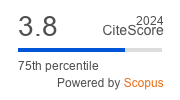Article | Open Access
Walking Praxis as Community‐Based Research: A Deep Map of Affective Flows in a Neighborhood Development Process
| Views: | 2303 | | | Downloads: | 1843 |
Abstract: The rapid transformation of suburban neighborhoods, driven by development and changing demographics, is causing feelings of loss, disconnect, and a perceived diminution of political representation. This study examines socio‐spatial relationalities that affect the sense of belonging in such neighborhoods‐in‐flux. We propose a re‐imagined participatory research process with residents from the perspective of “walkability.” Go‐along walking methodology enabled us to gather place‐based narratives that revealed how emotions and memories influence different aspects of the sense of belonging. Jointly moving through the environment gave us sensory exposure to sights, sounds, smells, and tactical sensations of the neighborhood. It also deepened our understanding of how residents mentally and physically navigate the proposed social and spatial transformations outlined in a municipal development plan. Our analysis, informed by a new materialist framework and visualized in a deep map, demonstrates how the walking methodology can generate new knowledge about socio‐spatial dynamics to plan and design place. The methodology facilitated spontaneous and affective encounters with both human and other‐than‐human agents. The diverse range of place‐based emotions, memories, and stories shared, provided insights into how the changing built environment and place identity produce multiple belongings. The findings suggest that go‐along walking praxis offers a unique socio‐spatial window into the affective flows of belonging in neighborhoods‐in‐flux.
Keywords: deep mapping; go‐along interviews; new materialism; spatial planning; suburban village; walking
Supplementary Files:
Published:
© Hanne Vrebos, Koen Hermans, Karin Hannes. This is an open access article distributed under the terms of the Creative Commons Attribution 4.0 license (http://creativecommons.org/licenses/by/4.0), which permits any use, distribution, and reproduction of the work without further permission provided the original author(s) and source are credited.


